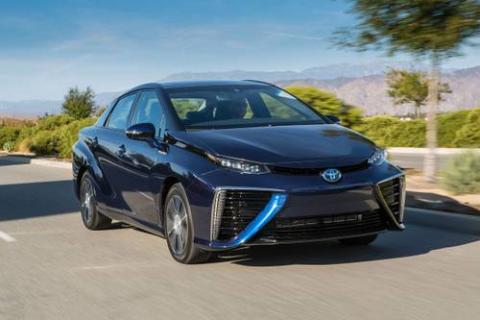Hydrogen Fuel Cells are the Future

While many carmakers have been putting a lot of blood, sweat and tears into electric vehicle technology, some have been dumping a lot of resources into the hydrogen fuel cell.
Haven’t heard much about it yet? Here’s how it works: You fill the tank with hydrogen (instead of gasoline). Then air is pulled in from the intake, delivering oxygen to the fuel stack. Hydrogen is simultaneously pumped into the fuel stack. This causes a chemical reaction that creates electricity, which is then used to power the motor when you hit the gas pedal.
As I’ve been saying for years, this is the real future of the auto industry. Why? Because it leaves behind zero carbon emissions. ZERO! The only thing that comes out of the tailpipe is water. And hydrogen is everywhere. It can be pulled from water, plants, and even manure. This is better than a typical electric vehicle because when someone “plugs in,” they’re still getting electric supplied mostly from good old-fashioned fossil fuels.
So what’s the hold up? Price, of course. As with any new technology, the cost is high. Hyundai, Toyota and Honda all have hydrogen cell vehicles you can buy today in the US, but it will set you back around $60k. The cost of hydrogen fuel is around the equivalent to $5.60 per gallon of gasoline. While that’s steep, the automakers are providing free fuel for the first three years after purchase to help offset the prices early adopters would have to pay. One upside to higher fuel costs is that because the energy is more efficient, these vehicles average 55-80 miles per gallon! That’s a little more bang for your buck.
So where can you get yours? If you live in California or Hawaii, you’re in luck, but the rest of the country has to patiently wait for the tech to grow. So why are you seeing it all over the new right now? The technology has recently been introduced to heavy duty, or semi trucks. The Port of Los Angeles is excited to be part of the project with Toyota as it takes 16,000 semis to move cargo in and out of the port.
It may take some time, but eventually this will be how most vehicles are powered, in my opinion. How long it will take is unknown – maybe 30-40-50 years? More? We shall see.
*photo credit: Edumunds






